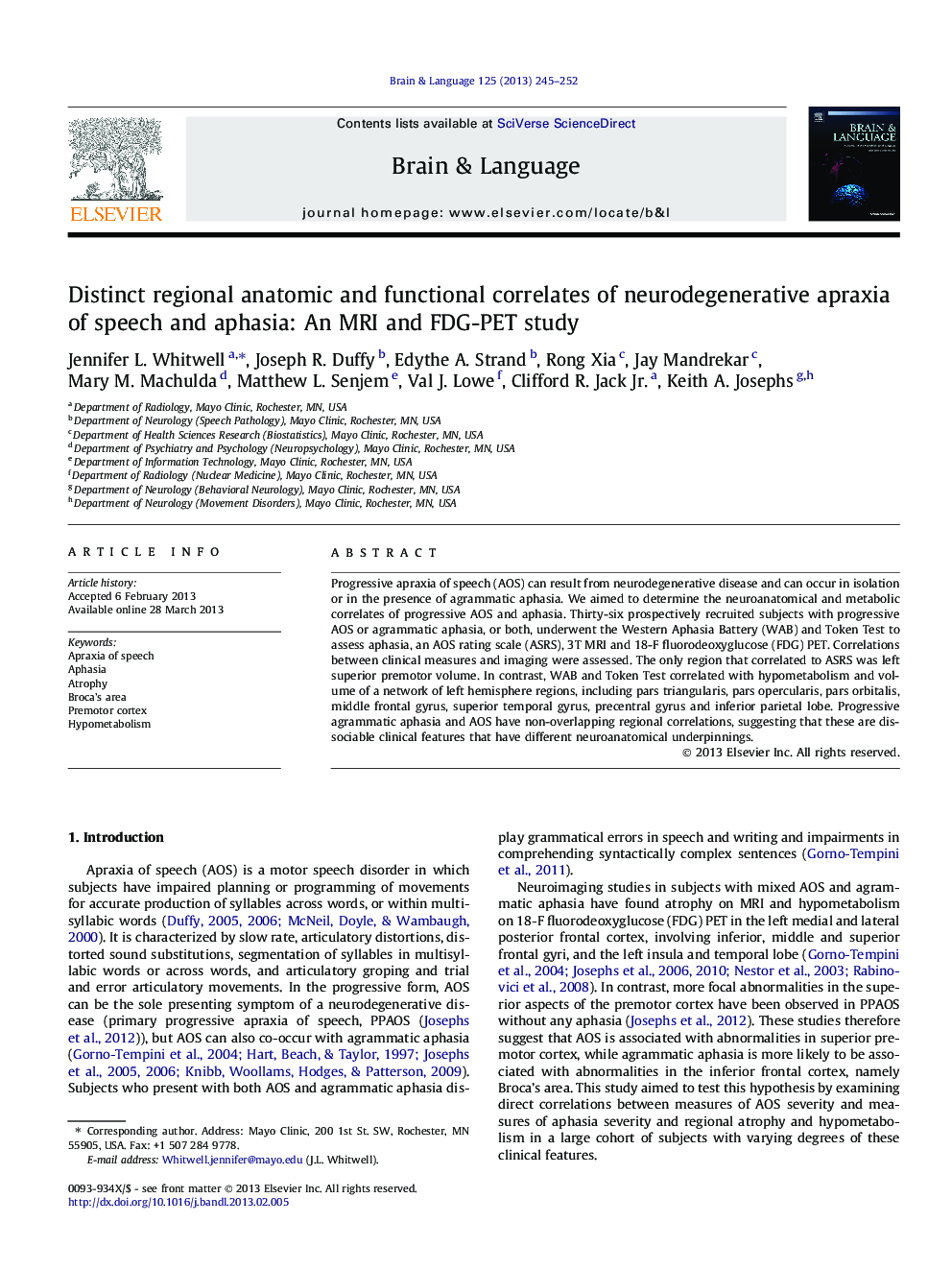| کد مقاله | کد نشریه | سال انتشار | مقاله انگلیسی | نسخه تمام متن |
|---|---|---|---|---|
| 925344 | 921481 | 2013 | 8 صفحه PDF | دانلود رایگان |

Progressive apraxia of speech (AOS) can result from neurodegenerative disease and can occur in isolation or in the presence of agrammatic aphasia. We aimed to determine the neuroanatomical and metabolic correlates of progressive AOS and aphasia. Thirty-six prospectively recruited subjects with progressive AOS or agrammatic aphasia, or both, underwent the Western Aphasia Battery (WAB) and Token Test to assess aphasia, an AOS rating scale (ASRS), 3T MRI and 18-F fluorodeoxyglucose (FDG) PET. Correlations between clinical measures and imaging were assessed. The only region that correlated to ASRS was left superior premotor volume. In contrast, WAB and Token Test correlated with hypometabolism and volume of a network of left hemisphere regions, including pars triangularis, pars opercularis, pars orbitalis, middle frontal gyrus, superior temporal gyrus, precentral gyrus and inferior parietal lobe. Progressive agrammatic aphasia and AOS have non-overlapping regional correlations, suggesting that these are dissociable clinical features that have different neuroanatomical underpinnings.
► We assess regional brain correlations of agrammatic aphasia and apraxia of speech.
► Severity of apraxia of speech correlated to volume loss in superior premotor cortex.
► Aphasia correlated to volume and metabolism of a network of left hemisphere regions.
► Aphasia correlated most strongly to hypometabolism in the pars triangularis.
► Agrammatic aphasia and apraxia of speech have non-overlapping regional correlations.
Journal: Brain and Language - Volume 125, Issue 3, June 2013, Pages 245–252